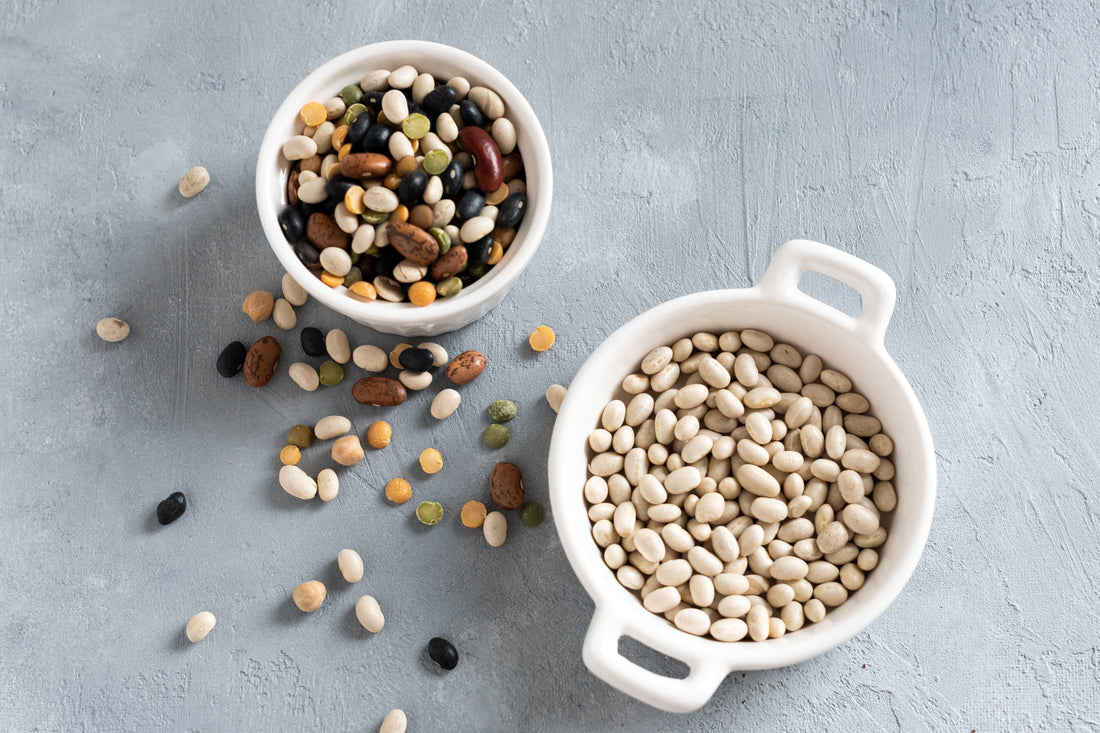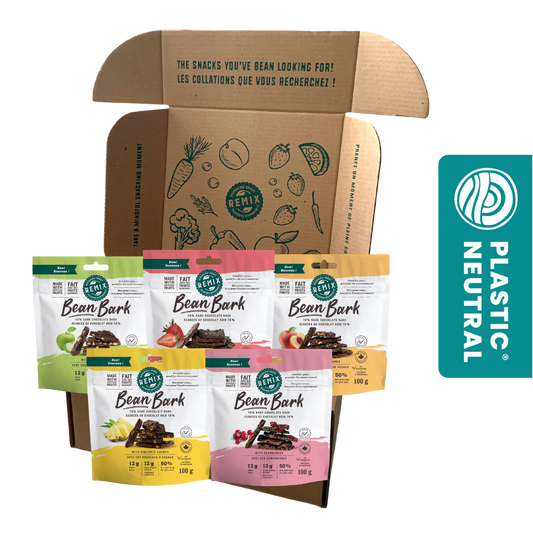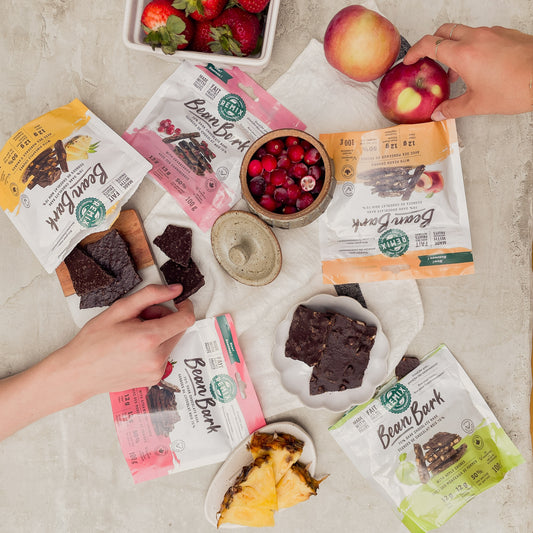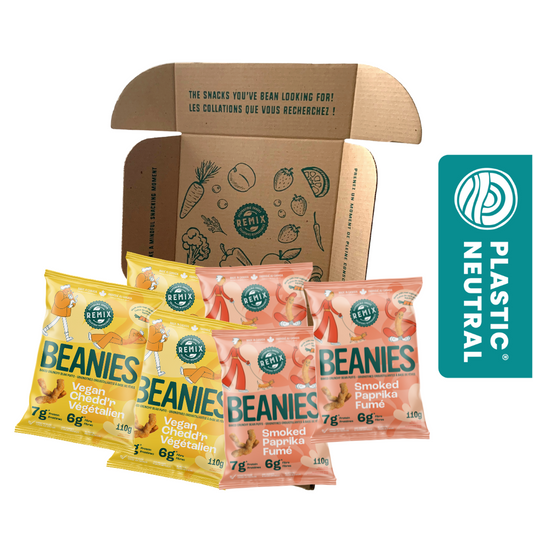
Written by: Fannie Dancose, April 2020
Where have you “bean” all my life?
I don’t know about you, but I feel like we hear more and more things about vegan diets, vegan protein and vegetarianism. Even the Canadian Food Guide brought up “plant-based protein” in its newest version. It seems that everyone is finding all sorts of perks and advantages. But what are plant-based proteins anyway? And why do we talk so much about them?
What are they?
Plant-based protein can be found in plant food like grains, nuts, seeds, and beans. Their structure differs from animal protein (meat, fish, dairy, egg) but proteins in plant food will cover your needs just like the ones in animal products. You just have to vary your sources when you eat them. Plant foods also contain healthy nutrients that you won’t find in a steak or an egg like fibre, antioxidants, some vitamins.
|
Food |
Protein Content (per 100 g) |
|
Oats (grain) |
17 g |
|
Sunflower seeds |
19 g |
|
Almonds |
20 g |
|
White navy beans |
22 g |
|
Chicken breast |
31 g |
There is so much variety in plant-based proteins, it is crazy. With over 38,000 varieties of beans in the world, the choices are endless! (1) But what makes beans (and peas and lentils) a nutritious and healthy food?
Why beans are good?
Beans have been shown to:
- Increase heart health by reducing risk of high blood pressure and by regulating blood lipids,
- Help prevent diabetes or help control it,
- Help you feel satisfied and increase satiety after a meal for a long period of time because they are high in fibre. (2, 3, 4, 5)
And, let’s be honest, they are super versatile and can be included in many recipes.
How to include beans in your diet?
If you feel ready to start cooking with beans, you can find plenty of dishes depending on the type of beans you have. Chickpeas? Do a Moroccan Couscous. Lentils? Mix them with spices and make a Dahl. Black beans? Why not try Vegetarian Tacos?
But, if this whole bean thing is new to you or if you don’t really like the texture or the taste, it is always possible to “hide” beans in recipes like black bean brownies. You can also try out our three Bean Bark flavours. Let yourself be surprised by their great taste with all the benefits of beans!
Sources
-
Genebank Platefrom. (2020). Genebanks and germplasm health units. Retrieved from https://www.genebanks.org/genebanks/
-
Bazzano, L.A., Thompson, A.M., Tees, M.T., Nguyen, C.H. & Winham, D.M. (2011). Non-soy legume consumption lowers cholesterol levels: a meta-analysis of randomized controlled trials. Nutr Metab Cardiovasc Dis. 21(2), 94-103.
-
Jayalath, V. H., de Souza, R. J., Sievenpiper, J. L., Ha, V., Chiavaroli, L., Mirrahimi, A., . . . Jenkins, D. J. (2014). Effect of dietary pulses on blood pressure: a systematic review and meta-analysis of controlled feeding trials. Am J Hypertens, 27(1), 56-64.
-
Sievenpiper, J. L., Kendall, C. W., Esfahani, A., Wong, J. M., Carleton, A. J., Jiang, H. Y., . . . Jenkins, D. J. (2009). Effect of non-oil-seed pulses on glycaemic control: a systematic review and meta-analysis of randomised controlled experimental trials in people with and without diabetes. Diabetologia, 52(8), 1479-1495.
-
McCrory, M. A., Hamaker, B. R., Lovejoy, J. C. & Eichelsdoerfer, P. E. (2010). Pulse consumption, satiety, and weight management. Adv Nutr, 1(1), 17-30.





